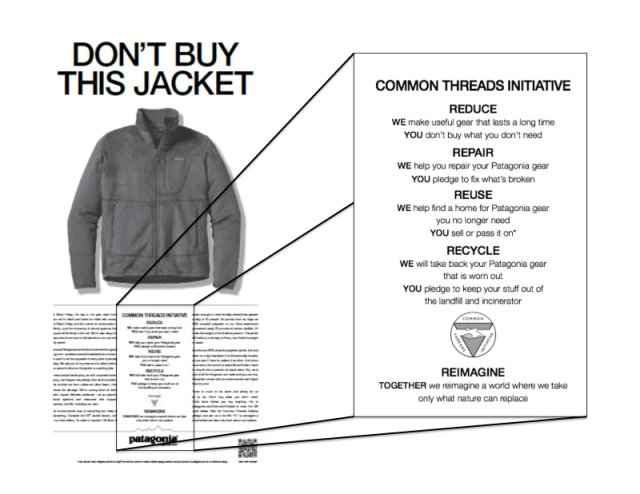Perpetual Purpose Trusts (Part I)
February 9, 2023 – John Abrams
The book I wrote in 2008 is called Companies We Keep. Let’s talk here about Companies We Give Away.
There aren’t many to talk about. Mainly it’s Patagonia. (See: this September 14, 2022 New York Times article). But now another icon of socially-responsible business, Zingerman’s (The Zingerman’s Community of Businesses) in Ann Arbor, MI has joined them.
The founders of both companies have created Perpetual Purpose Trusts (PPT) to provide long-term maintenance and protection of each company’s purpose, independence, and values.
PPTs are trusts established for the benefit of purposes rather than persons. The natures of the Patagonia trust and the Zingerman’s trust are very different. I’ll tell about the former here and the latter next month.
I’ve been a big fan of Patagonia for as long as I can remember, maybe all the way back to 1973 when they first added clothing to their line of hand-crafted climbing gear. I still wear their clothes every day; my drawers and closet are full of them. The first Patagonia jacket I bought bit the dust about a decade ago. After 40 years of stellar service, it was laden with past whispers and no longer shed water. If I hadn’t prematurely chucked it, that jacket would be headed to Worn Wear, - which repairs, re-furbishes, and re-sells old used garments and gear. A part of their built-to-last ethos.
My son Pinto wore a Guide Jacket snowboarding in the woods at Bridger and Steamboat until it was more duct tape than down. When the zipper broke, he brought it to the Boston store and they told him to go ahead and pick out a new one – they wanted to use his for a window display.
Patagonia products are functionally, aesthetically, and environmentally top-notch, but it’s their approach to business that has always attracted me the most. Their purpose: business exists to make a better planet and a better society. Simple as that. In both their products and their activism Patagonia has always been masterful at finding simple solutions to complex problems. One of my favorite examples is the 1990 Christian Action Council (CAC) boycott of Patagonia stores in response to their support of Planned Parenthood. When groups began to picket their stores, Patagonia immediately came up with Pledge-a-Picket. They rewarded every picketer who showed up with a ten-dollar donation to Planned Parenthood in the picketer’s name. The picketers disappeared and the boycott fell apart.
This is the same company that ran the famous “Don’t Buy This Jacket” ad on Black Friday in 2011 to encourage people to consider their buying habits and buy only what they need.
Here is a very short list of some other notable Patagonia innovations and initiatives. You can see plenty more here.
1980: Introduced the now universally known concept of “layering”
1983: Became one of the first US companies to provide workplace childcare
1986: Committed 1% of sales or 10% of profits (whichever is higher) to environmental groups
1993: Created the outdoor clothing world’s first fleece fabric made from recycled bottles
1996: Moved to 100% organic cotton
2007: Launched The Footprint Chronicles, which traces the journey of products from design through manufacturing
2014: Committed to 100% traceable down from ethical sources
2016: Launched a competition to promote scalable regenerative agriculture solutions to help fight climate change
2018: Changed mission statement to “We’re in business to save our home planet” and donated $10 million to environmental causes
2019: Recycled 10 million plastic bottles to create Black Hole Bags
Like I say, just a short list. After decades of constant innovation and relentless social activism, founder Yvon Chouinard and his family created perhaps their greatest innovation – their new PPT – which assures that, as long as Patagonia exists, its profits will irrevocably be put to work to reverse climate change.
Before creating the PPT, the Chouinard family considered a host of solution concepts. One was to convert the company into a worker co-op. As a relentless advocate for the benefits of worker co-ops, this is the first time I can remember feeling that a company made a better choice. There was too much money at stake (reportedly $3 billion). Committing future profit to climate reversal is a transformational act that is probably unprecedented in American business.
Chouinard’s family donated 2% of all stock and all decision-making authority to the trust, which will oversee the company’s mission and values. The other 98% of the company’s stock will go to a nonprofit called the Holdfast Collective, which “will use every dollar received to fight the environmental crisis, protect nature and biodiversity, and support thriving communities, as quickly as possible,” according to their statement.
“Instead of ‘going public’, you could say we’re ‘going purpose’,” said Chouinard. “Instead of extracting value from nature and transforming it into wealth for investors, we’ll use the wealth Patagonia creates to protect the source of all wealth.”
“As of now, Earth is our only shareholder,” the company announced. “All profits, in perpetuity, will go to our mission to ‘save our home planet’.”
In his 2005 book Let My People Go Surfing, Chouinard said, “I don’t have the courage to be a frontline activist myself. There are too many good causes that I support, and I get dangerously frustrated being on the front lines. But I believe in activism enough that I dig deep into my pockets and support those people with the courage to work in the trenches.”
He continued, “I have a different definition of evil from most people. Evil doesn’t have to be an overt act; it can merely be the absence of good. If you have the ability, the resources, and the opportunity to do good and you do nothing, that can be evil.”
He and his family had the ability, the resources, and the opportunity.
They did good.
Don’t buy that jacket.



